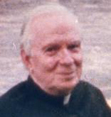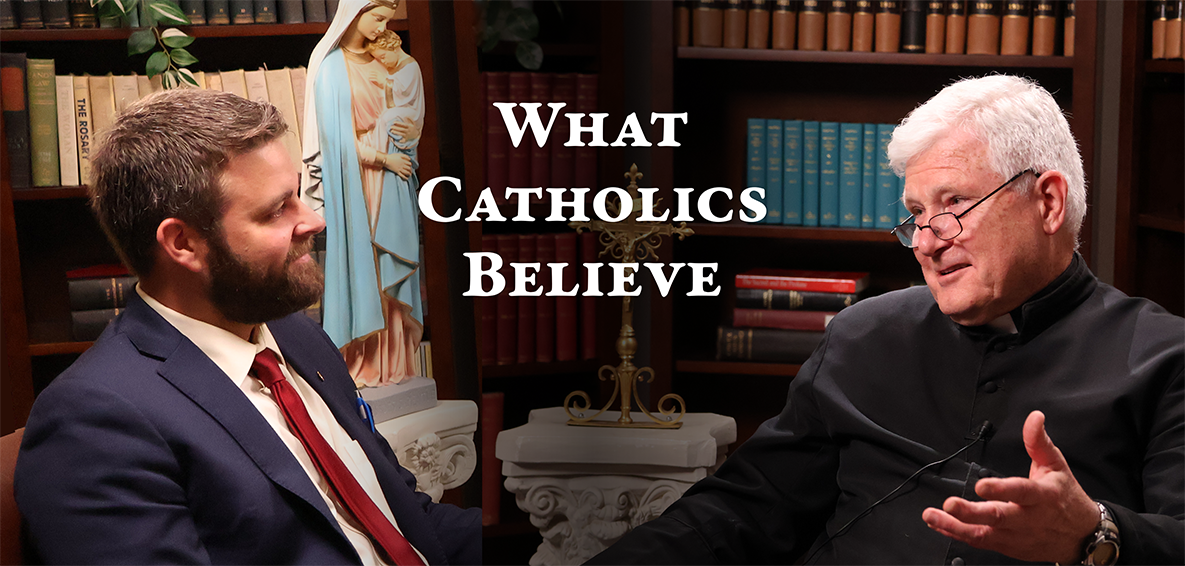Not an Ordinary Hero, Not an Ordinary Man: Rev. Roy Beverley Randolph, O.B.E.

[By Roger Randolph]
This month marks the 75th anniversary of the Siege Of Kohima (April 4th to April 20th, 1944) in north east India on the Burma border. The Battle of Kohima has been called the battle that saved India from Japanese invasion and was described by Lord Louis Mountbatten as "probably one of the greatest battles in history…” In a 2013 poll commissioned by Britain's National Army Museum, it was awarded the title of 'Britain's Greatest Battle', ahead of D-Day, Waterloo, Rorke's Drift and Aliwal.
The garrison at Kohima numbered approximately 2,500, a great many of whom were non-combatants. Leadership of the successful defence of Kohima until relief arrived fell to the 4th Battalion of the Queen's Own Royal West Kent Regiment whose numbers had been severely depleted by fighting in the Arakan to less than 500 soldiers, including 18 officers. The Battalion had just arrived in Kohima when the garrison was surrounded by the Japanese 31st Division numbering about 15,000. For the next sixteen days it was pounded and repeatedly charged by the Japanese, inexorably squeezing the perimeter until it was no more than 500 square yards and the two sides were locked in hand-to-hand fighting everywhere on the perimeter, and even across from each other on a tennis court, which took on an identity of its own and became known as the Battle of the Tennis Court.
My [adoptive] father, Roy Randolph, who was in India at the outbreak of the war, served the Regiment as its priest. At the Siege he was twice mentioned in dispatches and was also awarded the OBE (Officer of the Most Excellent Order of the British Empire) for the transcendent courage he displayed throughout in bringing aid and spiritual comfort to all and especially to the wounded and the dying,
This is a commemorative though wholly inadequate eulogy to my father, whose extraordinary story and saintly life deserve so much more. Because this is tied to the 75th anniversary commemoration of the Battle and Siege of Kohima I have by and large limited my remembrance of him and his actions to the Siege, as described by some distinguished writers.
He was born in 1909 in Woodward, Oklahoma when my grandparents were "traveling through". The Territory had only just achieved statehood and civilian records, like births and deaths, were spotty at best, with the result that later in life he was never able to produce a birth certificate to prove where he was born.
He was educated in Virginia and ordained an Episcopalian priest at the Theological Seminary of Virginia in 1932. Following a short attachment to St. John Episcopalian church in Hampton, Virginia (founded in 1610), he joined the Cambridge Mission to India in New Delhi where, soon after the outbreak of WWII and long before the US entered the war, he became a naturalized British citizen and signed up with the British Army where he was appointed Regimental Chaplain of the Queen's Own Royal West Kents.
“…Padre Randolph," wrote Arthur Campbell, MC. in his book, THE SIEGE, A Story from Kohima; George Allen & Unwin Ltd., London, 1956, "was a man of immense and real courage. He was intelligent and imaginative; bombing, shelling and the sight of suffering filled him with genuine fear; but only once did he show it, for one brief moment in the Arakan when we were all trembling under terrific bombardment. Wherever the men were in danger, distress or loneliness, there was the padre, giving comfort and courage. It is impossible to estimate how much we all owed to his wonderful Christian leadership. He was tall, but thin and stooped, and he had an ascetic's face. He had spent many years in India and had seen plenty of suffering in his time. Even so, because he lived among the wounded in the dressing station, with their crying always in his ears, their suffering impinged on his mind day and night while the delicate balance Of reasoning which compelled him to support his fellow men in the un-Christian practice of war stretched his faith to the uttermost... We were amazed that feeling as he did, he could spend day after day and night after night among the tortured bodies, sharing their pain, and still keep strong and true to his faith. We loathed as much as he the dirty and dangerous dressing station with the bleeding bodies and twisted minds lying in open pits, helpless and fearful…
Padre Randolph seemed to know exactly what was going on at all times; he knew what the men were thinking and how they were feeling, and he had words of comfort for them all. The harder pressed they were, and the more dangerous their situation, the more often the padre visited them. Each time he came under fire he was desperately frightened, as all of us were, but not one man to whom he spoke was aware of it. He kept his fear bottled up inside himself until he mastered it. His courage was immense, and all he met drew strength from it." After their great ordeal, Padre Randolph, "our spiritual guide, a supreme example of faith and courage, had reached heroic stature in our eyes, though he was now so slight and thin that a puff of wind would blow him over…”
In another book, NOT ORDINARY MEN, The Battle of Kohima Re-assessed; Leo Cooper, London, 1994, author John Colvin also writes about my father's caring and courage, "...the unending stream of wounded... had to be borne and succoured by the Regimental Chaplain, the Reverend Roy Randolph." He talked to the men constantly and helped the orderlies clear the mess whenever a shell landed in a trench. One private was quoted by a military correspondent as saying, "Padre Randolph used to sleep in the hospital trenches alongside the wounded and did everything to make us comfortable." He was "a man who, because he had conquered very great fear, was not only of an ascetic sweetness, but of unbreakable courage, his tall, thin an example of goodness and belief to all his countrymen.”
Fergal Keane, OBE, in his book ROAD OF BONES, The Siege of Kohima 1944, The Epic Story of the Last Great Stand of Empire, Harper Press, London, 2010, describes the padre as "tall and thin, with melancholy eyes and a gentleness of manner that seemed out of place on the battlefield. He had an abiding hatred of any kind of physical violence, but he believed that men's souls were all the more needful of salvation in the places of death. The men would come to regard him as one of the bravest among them."
My father did not like talking about the Siege but one of the things he did tell me was that because the perimeter was continually getting smaller, accuracy in the air drops of supplies became more difficult and increasingly more supplies fell in enemy territory. He and one of his fellow officers took it upon themselves to recover whatever they could, especially if it was water which was in very short supply and had been rationed down to a few sips per man per day! All he would add is that they were relatively successful…
At Kohima there is a memorial that reads: "At Kohima in April 1944, the Japanese invasion of India was halted. "
The epitaph at the cemetery in Kohima, now known as the Kohima Epitaph and widely used, even on park benches in Britain, reads "WHEN YOU GO HOME TELL THEM OF US AND SAY FOR YOUR TOMORROW WE GAVE OUR TODAY”
After the war a private of the Royal West Kents wrote of the Siege "Padre Randolph and Colonel Laverty (CO Kohima Garrison) saved India, the Padre through prayer for the strength for all of us to hold on." What would have happened had they not held on does not bear thinking about.
Following the war my father worked with refugees in Java and in Italy and then went to Estoril in Portugal where he ministered to the Anglican community. He then moved to South Africa where he took up the position of Dean of St. Mary's Cathedral which carried with it the position of Dean of Johannesburg. His Sunday evening sermons at Evensong became famous and he was soon contracted by the South African Broadcasting Corporation to air the service every week. With ever greater pressure being put on him to become politically active he decided to resign. He subsequently became Chaplain General of the South African Armed Forces. A few years later he converted to Roman Catholicism, taking the name of Joseph, and entered the Beda College for Mature Vocations in Rome. But Vatican II was on the horizon and to his great dismay the Church was becoming all of the things from which he had wanted to escape by becoming a Roman Catholic. He withdrew from the College and moved to Bogota where he taught English, Greek and Latin at one of Latin America's premiere universities (he was fluent in another eight languages, including Hindi and Urdu). But his calling was still strong and three years later he entered the conservative seminary of San Telmo in Seville, Spain where he was ordained a Catholic priest in 1966 by Cardinal Archbishop Bueno Montreal.
After three years of teaching at the Seminary and assisting at local parishes in southern Spain, seeking peace and stability he moved to Canada, becoming a Canadian citizen in 1977.
He anguished about the changes going on in the Catholic Church, but he soon found some solace in Archbishop Lefebvre's Society of St. Pius X. In Rochester, New York, he instigated and organized the purchase of a chapel on behalf of the Society which became the Church of the Holy Name of Mary and of which he became the rector. For the remaining years of his life he worked with the priests of the Society of St. Pius V whose headquarters were on Long Island, New York. He was home at last.
Father Randolph died of cancer at the age of 79 and is buried in the cemetery of St. Joseph's Novitiate in Round Top, New York. Home, indeed.

